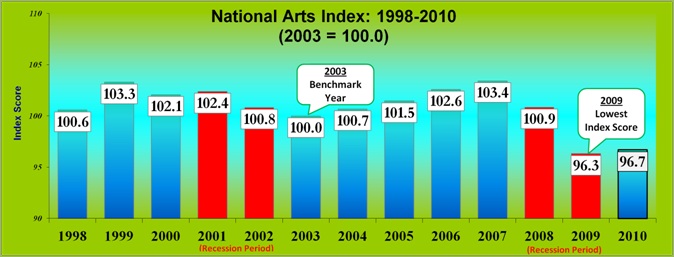
Randy Cohen
Without the Data, You’re Just Another Person with an Opinion
Posted by Apr 11, 2012

Randy Cohen
Three years before writing Future Shock in 1970, futurist Alvin Toffler first wrote The Art of Measuring the Arts, and noted, "A cultural data system is needed to provide information for rational policy-making in the cultural field and to assist those outside the field in understanding their impact on it."
This week, Americans for the Arts released the 2012 National Arts Index report, which delivers a 2010 score of the health and vitality of the arts in the U.S.
From its low point in 2009, the Index rose slightly from 96.3 to 96.7 in 2010.
This year’s report bears witness to how the arts sector fared during the Great Recession—and the losses were swift and measurable.
In 2010, half of the 83 indicators measured increased, which is equivalent to pre-recession, 2007 levels. In comparison, only one-third of the indicators were up in 2008 and in 2009, just one-quarter increased.
Here are just a few top-level findings from the 2012 National Arts Index:
1. There has been significant growth in the number of nonprofit arts organizations: In the past decade, the number of nonprofit arts organizations grew 49 percent (76,000 to 113,000), a greater rate than all nonprofit organizations (32 percent). Or to look at it another way, from 2003-2010, a new nonprofit arts organization was created every three hours in the U.S.
Read More






